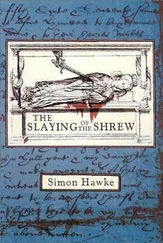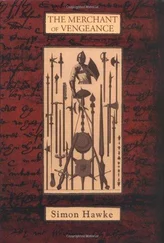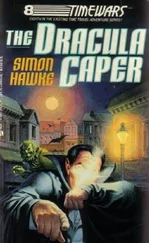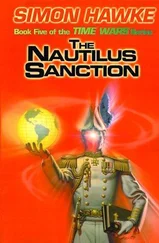Simon Hawke - The Pimpernel Plot
Здесь есть возможность читать онлайн «Simon Hawke - The Pimpernel Plot» весь текст электронной книги совершенно бесплатно (целиком полную версию без сокращений). В некоторых случаях можно слушать аудио, скачать через торрент в формате fb2 и присутствует краткое содержание. Жанр: Фантастика и фэнтези, на английском языке. Описание произведения, (предисловие) а так же отзывы посетителей доступны на портале библиотеки ЛибКат.
- Название:The Pimpernel Plot
- Автор:
- Жанр:
- Год:неизвестен
- ISBN:нет данных
- Рейтинг книги:3 / 5. Голосов: 1
-
Избранное:Добавить в избранное
- Отзывы:
-
Ваша оценка:
- 60
- 1
- 2
- 3
- 4
- 5
The Pimpernel Plot: краткое содержание, описание и аннотация
Предлагаем к чтению аннотацию, описание, краткое содержание или предисловие (зависит от того, что написал сам автор книги «The Pimpernel Plot»). Если вы не нашли необходимую информацию о книге — напишите в комментариях, мы постараемся отыскать её.
The Pimpernel Plot — читать онлайн бесплатно полную книгу (весь текст) целиком
Ниже представлен текст книги, разбитый по страницам. Система сохранения места последней прочитанной страницы, позволяет с удобством читать онлайн бесплатно книгу «The Pimpernel Plot», без необходимости каждый раз заново искать на чём Вы остановились. Поставьте закладку, и сможете в любой момент перейти на страницу, на которой закончили чтение.
Интервал:
Закладка:
Simon Hawke
The Pimpernel Plot
Prologue
An End to War…
On April 1, 2425, Dr. Wolfgang Amadeus Mensinger, professor emeritus at Heinlein University on Dyson One, discovered time travel. Already hailed as the greatest scientist of his time for his formulation of the Unified Field Theory at the age of eighty-five, Mensinger had been in disfavor with the scientific community for thirty years as a result of steadfastly maintaining that time travel or, as he preferred to call it, temporal translocation, was theoretically possible. When he made the announcement on his one hundred and fifteenth birthday, he promptly became the darling of the media. Had anyone else come forth with such a theory, he would have been just another mild and amusing curiosity, but when the man who had relegated Einstein to the league of the also-rans made such a pronouncement, people listened.
Access to the media had never been a problem for Dr. Mensinger. He was a garrulous, highly articulate, and charming man with an empathy for the nonscientific mind, which resulted in his being able to explain complex ideas in a manner that the layman could easily understand. He also understood what, traditionally, most scientists did not, that scientific research was to a large degree a game of politics.
Initially, his theory was received with great excitement by the media and the masses, while his colleagues in the scientific community reacted with a degree of skepticism that bordered on derision. Most of them felt that the venerable Dr. Mensinger had already done his best work and that in reaching for a still greater achievement, he had overextended himself and irresponsibly turned to cheap sensationalism. The media, always anxious for an entertaining confrontation, provided countless opportunities for his critics to attack him, which attacks were made more feasible by the simple expedient of Dr. Mensinger’s lacking any proof to back up his assertions.
Furious at the treatment accorded him by the media and his peers, Mensinger went into semiseclusion at the university on Dyson, where the administration was more than happy to provide some limited funding for his research in exchange for having the famous Dr. Mensinger as a lecturer on its faculty. Professor Mensinger married the daughter of the dean and settled into the academic life, all the while driving himself with superhuman energy to complete his research. As time wore on and results failed to appear, his budget was steadily whittled away and his health began to decline. He began to grow derelict in his academic responsibilities and the only reason he was kept on was the value of his name and his relationship to the dean. His fellow professors liked him, but they looked on him with pity as a tragic case of burnout. Then, in his hundred and fifty-second year, he developed the first working model of the chronoplate.
When Mensinger died, fifteen years after he made time travel a reality, his work was continued by his son, Albrecht. Unfortunately, by this time, Albrecht was only able to refine his father’s work. He no longer had control of the discovery. The politicians had stepped in.
On June 15, 2460, the Committee for Temporal Intelligence was formed. Agents of the committee, after careful training and conditioning, began to travel back through time for the purpose of conducting further research and testing of the apparatus. In the beginning, many of these agents were lost in transit trapped forever in a temporal limbo some government official had nicknamed “the dead zone,” but those who returned came back with often startling information. Historical records had to be revised. Some legends turned out to have been fact. Some facts turned out to have been legends. Historical events that previously lacked documentation were verified. Other events were brought to light. The Theory of Genesis was refuted and there followed a revolution in the Church, which culminated in a radical proposal made by Cardinal Consorti that agents be sent back through time to determine if Christ actually arose after his crucifixion. A restraining order was placed on the Committee for Temporal Intelligence to prevent them from attempting such a thing and Cardinal Consorti was excommunicated
On January 25, 2492, in a historic meeting which became known as the Council of Nations, taking place in the capital of the United Socialist States of South America, a proposal for an “end to war in our time” was put forth by the chairman of the Nippon Conglomerate Empire. Though Dr. Albrecht Mensinger, invited to the council as a guest of honor, argued passionately against the resolution, it was passed by an over-whelming majority when he was unable to offer conclusive proof that the past could be affected by actions taken by time travelers from the present. The past, argued the members of the scientific community invited to the conference, cannot be changed. It had already happened. It was absolute.
On December 24, 2492, the Referee Corps was formed, brought into existence by the Council of Nations as an extranational arbitrating body with all power to stage and resolve the proposed temporal conflicts. On the recommendation of the newly created Referee Corps, a subordinate body named the Observer Corps was created, taking over many of the functions of the Committee for Temporal Intelligence, which became the Temporal Intelligence Agency. The TIA absorbed the intelligence agencies of most of the world’s governments and was made directly responsible to the Referee Corps. Within the next ten years, temporal confrontation actions, presided over by the Referee Corps, began to be staged. The media dubbed them the “Time Wars.”
In September of 2514, Albrecht Mensinger published the work that was to establish him as an even greater genius than his father. The conclusions he had reached were also to result in his eventual total nervous collapse a few years later. These conclusions, which resulted in the hastily reconvened Council of Nations and the Temporal SALT Talks of 2515, were published as “Mensinger’s Theories of Temporal Relativity.” They were as follows:
The Theory of Temporal Inertia. The “current” of the timestream tends to resist the disruptive influence of temporal discontinuities. The degree of this resistance is dependent upon the coefficient of the magnitude of the disruption and the Uncertainty Principle.
The Principle of Temporal Uncertainty. The element of uncertainty expressed as a coefficient of temporal inertia represents the “X factor” in temporal continuity. Absolute determination of the degree of deviation from the original, undisrupted scenario is rendered impossible by the lack of total accuracy in historical documentation and research (see Heisenberg’s Principle of Uncertainty) and by the presence of historical anomalies as a result either of temporal discontinuities or adjustments thereof.
The Fate Factor. In the event of a disruption of a magnitude sufficient to affect temporal inertia and create a discontinuity, the Fate Factor, working as a coefficient of temporal inertia, and the element of uncertainty both already present and brought about by the disruption, determine the degree of relative continuity to which the timestream can be restored, contingent upon the effects of the disruption and its adjustment.
The Timestream Split. In the event of a disruption of a magnitude sufficient to overcome temporal inertia, the effects of the Fate Factor would be canceled out by the overwhelming influence of the resulting discontinuity. The displaced energy of temporal inertia would create a parallel timeline in which the Uncertainty Principle would be the chief governing factor.
Mensinger appeared once again before the Council of Nations and he formally submitted his publication, along with its supporting research and conclusions, to the world leaders. Once again he argued passionately, this time for the immediate cessation of the Time Wars. This time, they listened. Resolutions were made, voted on, and passed. However, the one resolution Mensinger most wanted to see passed was tabled due to the lack of agreement among the members of the council. Mensinger left the meeting in despair, a broken man. The Time Wars continued.
Читать дальшеИнтервал:
Закладка:
Похожие книги на «The Pimpernel Plot»
Представляем Вашему вниманию похожие книги на «The Pimpernel Plot» списком для выбора. Мы отобрали схожую по названию и смыслу литературу в надежде предоставить читателям больше вариантов отыскать новые, интересные, ещё непрочитанные произведения.
Обсуждение, отзывы о книге «The Pimpernel Plot» и просто собственные мнения читателей. Оставьте ваши комментарии, напишите, что Вы думаете о произведении, его смысле или главных героях. Укажите что конкретно понравилось, а что нет, и почему Вы так считаете.












